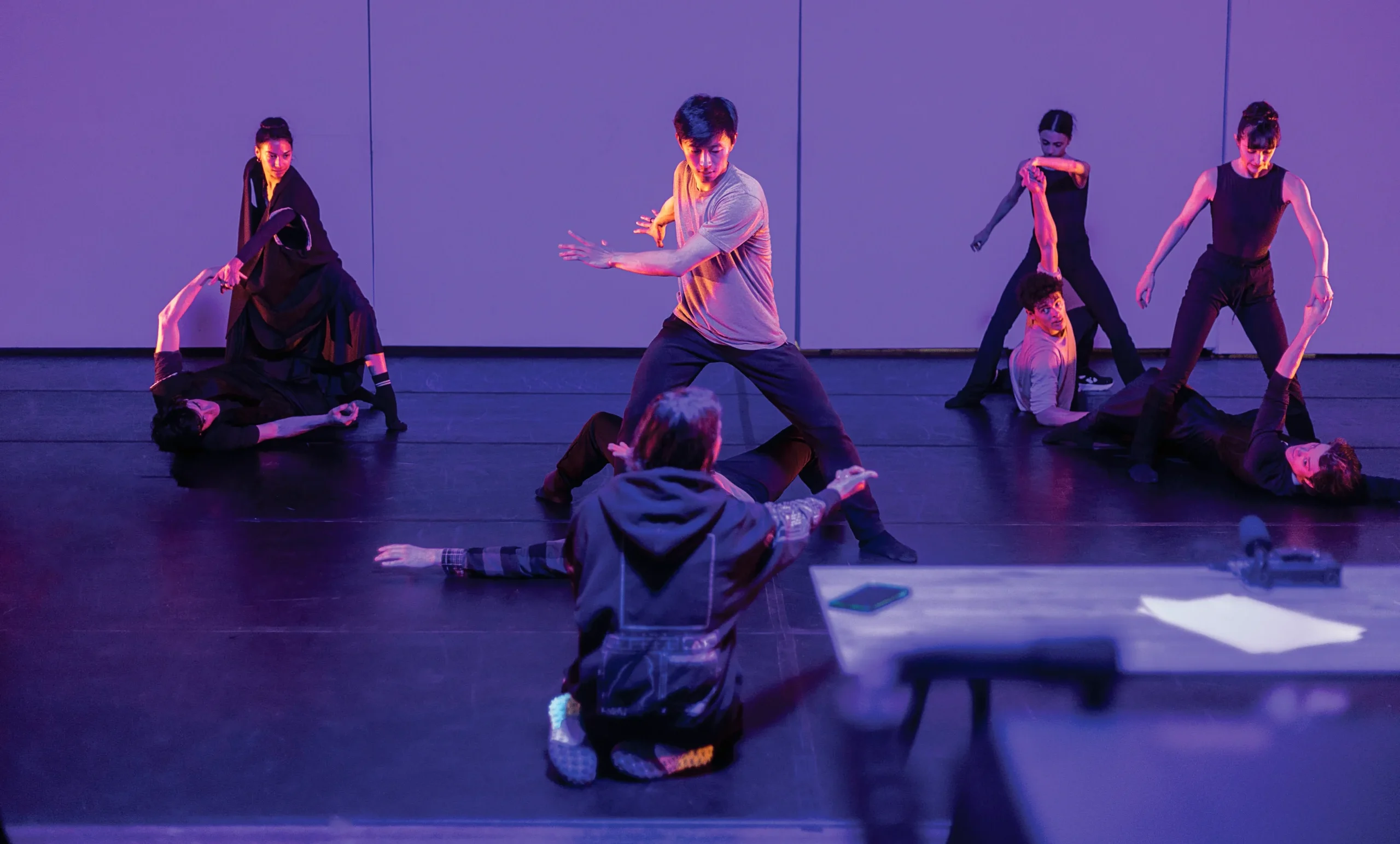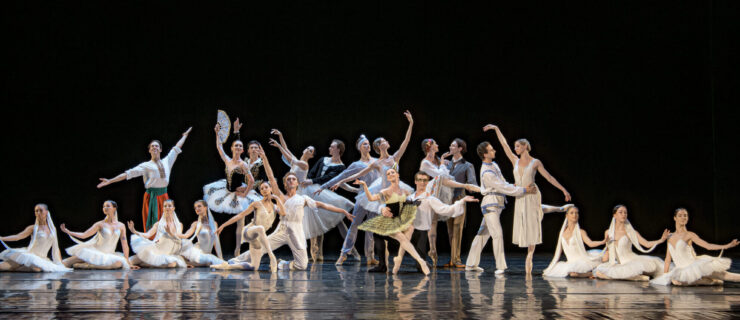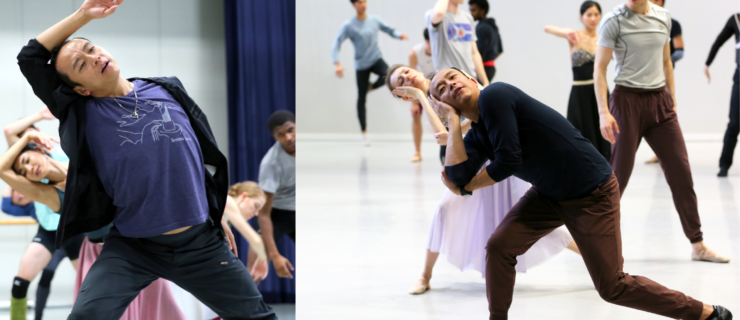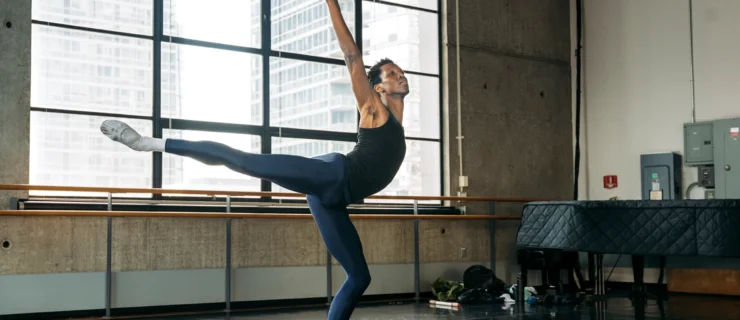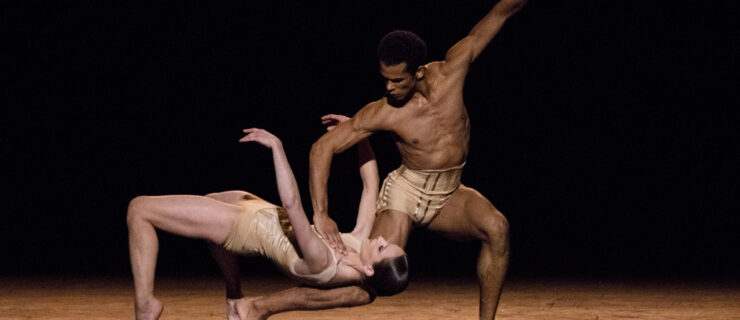A Pandora’s Box of Ballet and AI: Aszure Barton’s Mere Mortals Premieres at San Francisco Ballet
“We need to know where we’re going to as we’re going.”
Aszure Barton addresses this to 67 San Francisco Ballet dancers. It’s Halloween, the rehearsal time for her world premiere Mere Mortals is coming to an end, and camera crews are stationed in the studio’s corners to capture video footage for World Ballet Day. The flow of bodies resembles an airplane terminal as much as a ballet. Barton calmly focuses the cast and works through the pedestrian but necessary task of ensuring everyone knows how to get from point A to point B.
Mere Mortals is inspired by the Greek myth of Pandora from the poet Hesiod. In the poem, Pandora opens a container that unleashes ills upon humanity, and when she closes it, all that is left inside is hope. The scale of Barton’s new ballet aims to live up to its mythic container.
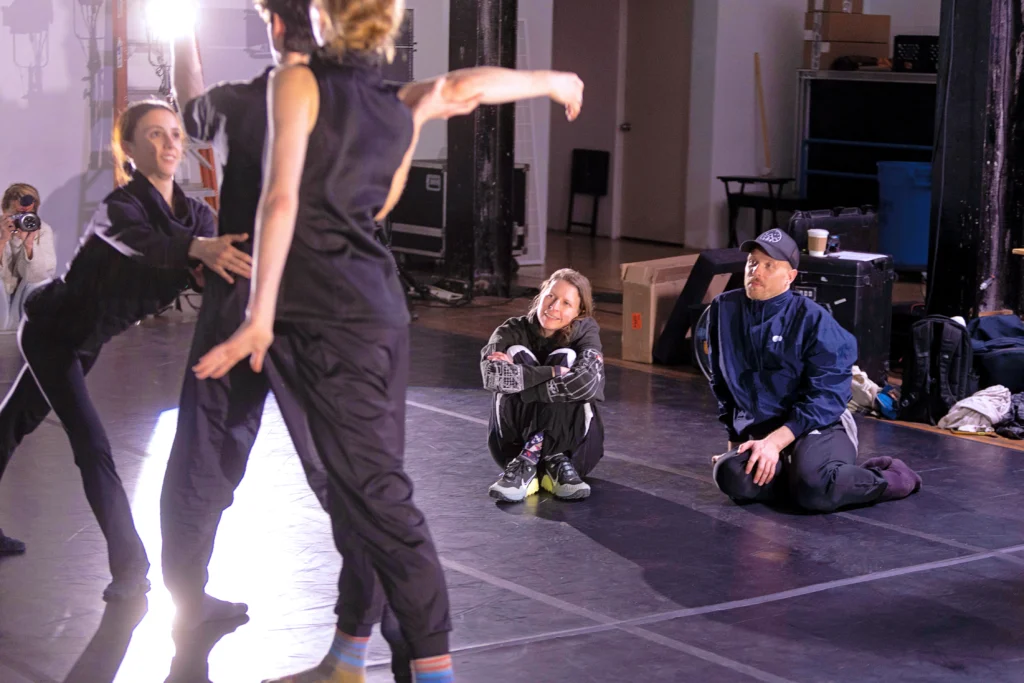
Barton is collaborating with musician Sam Shepherd, known as Floating Points, who is composing an original score, and Barcelona-based design firm Hamill Industries, which is creating AI-informed stage and lighting designs and an installation for the War Memorial Opera House lobby. Unlike the majority of new work commissions, in which choreographers choose their collaborators, this trio of artists were assigned to work together by artistic director Tamara Rojo.
Rojo took the reins at SFB last year when Helgi Tomasson retired after 37 years in the role. This year is her first season programming for the company. Mere Mortals, running January 26–February 1, is the first full-length work SFB has commissioned from a female choreographer. To give time to creative experimentation, Rojo brought the artistic team together for a residency in the spring of 2023 before the rehearsal period began.
“It was really helpful simply to be in the space together,” Barton says. “To start off in a creative space where we could brainstorm together and get to know each other. We actually didn’t speak a lot—we worked alongside each other, floating around in the unknown.”
It was Barton’s first commission working with collaborators unfamiliar to her. The initial Pandora idea came from conversations between Rojo and Shepherd, and Rojo thought Barton would be the perfect match as a choreographer.
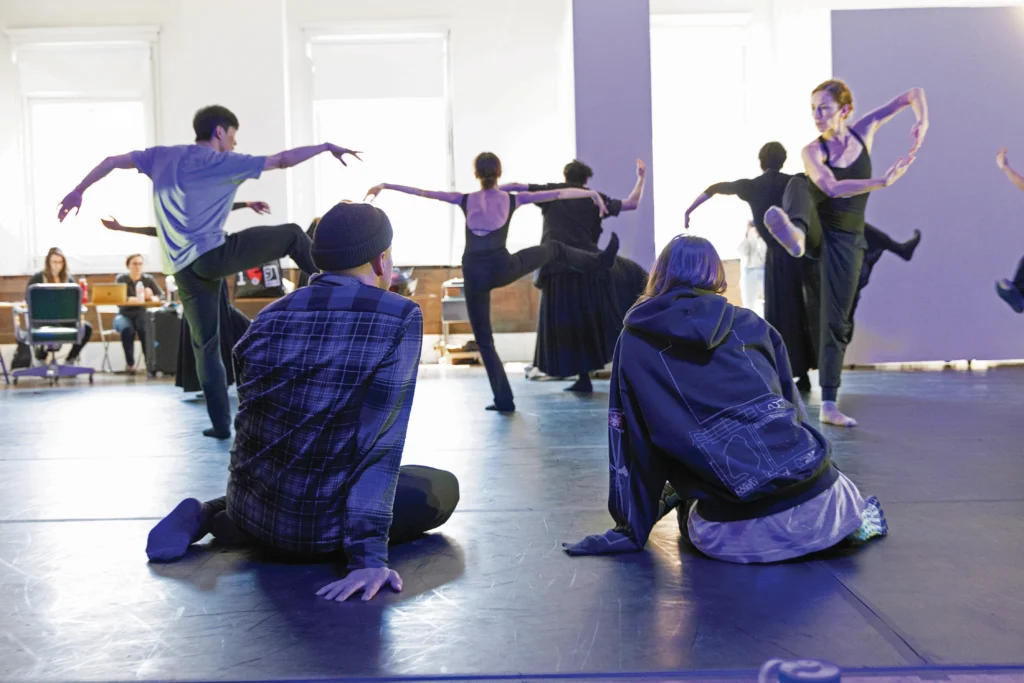
“I don’t often conceptualize in advance,” says Barton. “I’m so affected by the human beings that I’m working with, but this was something Sam felt very strongly about, and I was curious about his curiosity, so the concept developed from there.”
Barton jumped on the opportunity to work with as many dancers as possible. “I find it to be an exciting challenge on many levels,” she says. “If you can create an atmosphere with that many people engaged it is incredibly fulfilling.”
For principal dancer Wei Wang, who portrays the concept of Hope in the ballet, the choreographic process was intense and rewarding. “I remember the feeling of the first few weeks of the rehearsal almost like being ‘drowned’ with movements and the amount of people,” he says. But the way Barton and her team “had everyone brainstorming with them and actively involved throughout the process was so rewarding and created the space for growth as dancers.”
It was important to Barton to erase the hierarchy within ballet companies in rehearsals by having all the dancers work collectively regardless of rank. “I just thought humans are humans in this process,” she says. “Let’s create this thing together.”
In many rehearsals, Barton would teach the same movement phrases to the entire cast and ask them to problem-solve together. For corps de ballet dancer Carmela Mayo, it was an engaging way to make ballet.
“Aszure’s creative process is truly intense,” says Mayo. “She is able to blend the traditional ballet movement that we practice daily with new experimental elements, and she encourages us to tap into our individual artistry, which creates visually and emotionally powerful scenes.”
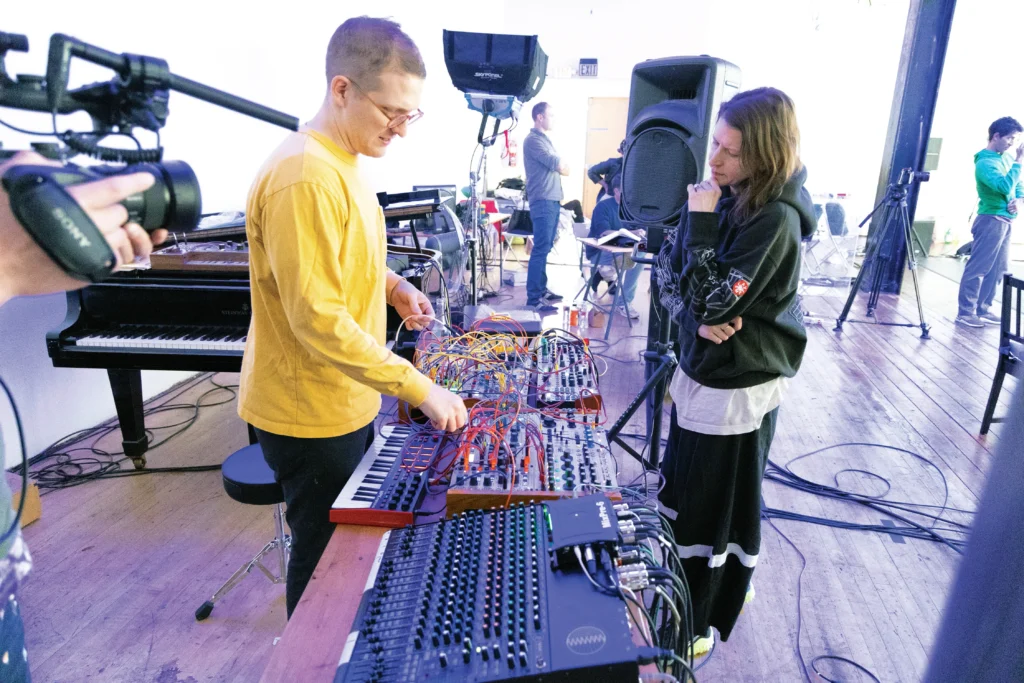
Principal Jennifer Stahl will originate the role of Pandora in Mere Mortals. She describes the process of making movement as building layers of complexity. Barton and James Gregg, assistant choreographer, would teach base movement phrases. “From there,” Stahl says, “Aszure would cut and paste different sections, completely flip something around, stretch one phrase into 10 mini-phrases. There was so much playing within the bones of a phrase.”
Mere Mortals will not be an exact telling of the myth’s narrative but will focus more on the characters connected to the story, with each character’s movement quality being specific to their essence. Stahl describes Pandora as being “all knowing, all giving, all encompassing.”
The process of embodying Pandora required Stahl to be patient in “discovering my body and ways of moving,” she says. “Be like water and flow. It’s important in life, too.”
